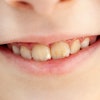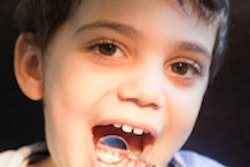
A new paper in the Canadian Journal of Dental Hygiene highlights the crisis in children's oral care and offers a proven program of treatment and behavior modification that has shown results in improving children's oral hygiene.
In the paper, Robert Compton, DDS, the executive director of the DentaQuest Institute, reported on the opportunities to increase prevention in dentistry (CJDH, November 2014, Vol. 48:4, pp. 179-181). He noted that up to 41% of the U.S. population 5 years and older has some form of untreated dental caries, according to the Centers for Disease Control and Prevention. Children "at or below the federal poverty level" have the highest untreated dental caries rates, at just over 25%, he wrote.
Additionally highlighting the issue, Dr. Compton cited a recent report by the Centers for Medicare and Medicaid Services (CMS) that showed that less than half (46.9%) of children receiving Medicaid were able to access any dental care at all in 2013.
While he acknowledged that the present Medicaid budgets "often lead" to fees that were less than the cost of providing care to repair the damage caused by caries, he wrote that effective preventive treatment, provided by dental hygienists or "other health professionals," can help keep the disease from progressing to the point that the child needs surgical or other treatment.
Dr. Compton wrote that there are three stages of disease and levels of prevention, which were defined by James Jekel and colleagues in their book Epidemiology, Biostatistics, and Preventive Medicine (W.B. Saunders Company, 2007).
“The result of behavior modification and goal setting along with frequent application of fluoride varnish and home fluoride toothpaste was a reduction of 65% in new cavitation.”
"Predisease but at-risk" is the primary level, defined as keeping the disease process from becoming established by eliminating causes or increasing resistance. This includes health promotion and practical information to the parents, for example.
"Presymptomatic" is the secondary level of prevention. It is defined as interrupting the disease process before it becomes symptomatic and involves the detection and management of presymptomatic disease, and also the prevention of its progression to symptomatic disease.
The third level of prevention is "symptomatic." Tertiary prevention refers to the treatment of symptomatic disease in an effort to prevent its progression to disability or even contributing to premature death, Dr. Compton wrote. Tertiary prevention often applies to chronic diseases, such as diabetes, which can be managed but not cured as of yet, he noted.
Protocols
According to Dr. Compton, as the knowledge of dental disease and prevention has increased, the opportunities to provide necessary care and preventive intervention have also multiplied. He touted the DentaQuest Institute's partnership with Boston Children's Hospital on their Early Childhood Caries (ECC) Collaborative.
The protocol used in this collaborative effort includes a risk and behavior assessment of parents' actions. Citing a 2002 study, Dr. Compton noted that when it comes to health determinants, healthcare services may provide 10% of the contributions, but behavior may contribute four times as much in terms of meaningful change (Health Affairs, March 2002, Vol. 21:2, pp. 78-93).
The clinical staff, he wrote, are trained in motivational interviewing, behavior modification, and goal setting. He used the powerful example that many parents are not aware of the danger juice in a child's sippy cup presents toward caries development or that "milk in a bottle at bedtime damages their child's teeth."
The hospital staff are trained to help parents work on changing one behavior a month, such as putting water in the bottle at bedtime instead of milk or juice, according to Dr. Compton. "The result of behavior modification and goal setting along with frequent application of fluoride varnish and home fluoride toothpaste was a reduction of 65% in new cavitation," he wrote.
Many of the interventions "can be done by nondentist health professionals, achieve better health outcomes, and cost less than placing restorations," he noted.
The expansion of primary, secondary, and tertiary prevention methods may well achieve "improved health outcomes, better patient experience, and lower cost," he concluded. This would allow existing healthcare benefit money to be used to treat more patients and possibly increase access.



















